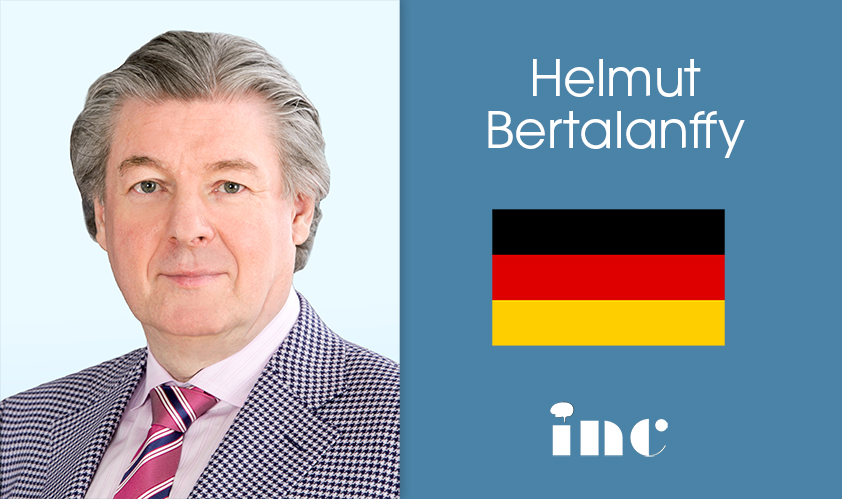Helmut Bertalanffy教授

国际公认的脑干肿瘤巨擘
- 国际神经外科联合会(WFNS)教育委员会现任主席
- 国际神经外科联合会(WFNS)提名委员会前任主席
- 欧洲神经外科杂志《Neurosurgical Review》主编 (2004-2016年)
- 国际神经外科学院创始会员
- 美国神经外科学院通讯会员
- 美国神经外科医师协会(AANS)国际咨询委员会成员
擅长领域:
大脑半球病变——颅底肿瘤、脑膜瘤、听神经瘤、脊索瘤、垂体腺瘤、表皮样囊肿、颅咽管瘤、下丘脑神经胶质瘤、海绵状血管瘤、胶体囊肿。
脑干病变——神经胶质瘤、室管膜瘤和血管母细胞瘤
脑血管疾病——脑动脉瘤、动静脉畸形、动静脉瘘
脑内深层区胶质瘤(岛叶,丘脑,基底神经节,海马区域)
颅颈交界处的病变
颅内旁路血管搭桥术
侧脑室和三脑室肿瘤切除术
松果体区和四脑室的肿瘤切除术
神经吻合术
椎管内肿瘤切除术——(神经鞘瘤,室管膜瘤,胶质瘤,海绵状血管瘤,血管母细胞瘤,表皮样囊肿和脂肪瘤)
在具有手术指征的情况下,需要主刀医生选择正确的入路和方式以更大水平的暴露病变区域。Bertalanffy教授擅长在颅底和脑内深层病变区域实施显微外科手术,而不损伤周围健康的脑组织,例如手术难度大的脑干部位。
每位患者都有着独特的解剖学条件,Bertalanffy教授会根据每位患者的实际情况定制手术方案和干预措施,以实施高质量的显微手术。
前沿技术:
脑干病变:在连续电生理监测下使用神经导航进行显微外科手术
颅底手术:使用显微镜,技术前沿的神经导航和微创手术方法实施现代化的外科手术;复杂脑膜瘤,神经瘤和许多其他病变的显微外科手术,包括恶性颅底肿瘤
脑血管疾病:术中使用多普勒超声和ICG血管造影进行显微外科手术
深层区脑肿瘤:现代显微外科手术,神经导航,5-ALA荧光和术中MR引导(1.5特斯拉装置)
脊髓肿瘤:在连续电生理监测(诱发电位)下的精确显微外科手术。
职业生涯:
2010后 汉诺威国际神经外科研究所血管神经外科主任
2007–2010 苏黎世神经外科大学教授和主席
1997–2007 马尔堡大学神经外科教授和主席
1996 马尔堡大学神经外科主席
1992–1996 亚琛技术大学神经外科部顾问
1994 博士后资格
1994 亚琛技术大学杰出科学成就弗里德里希•威廉奖
1990-1992 在东京庆应义塾大学神经外科部从事研究,主要研究领域:脑及脊髓微循环和颅底手术
1990 神经外科专家; 德国洪德宝基金和日本医学促进学会院士
1986 获得博士学位
1983 德国弗莱堡大学医学院
学术成就:
由于在血管神经外科,脑干病变及颅底手术中的学术贡献,Bertalanffy教授以演讲嘉宾身份出席了400多场国际会议。他也担任Neurosurgical Review主编达12年之久,同时他也是一些国际神经外科杂志的评论家。他以作者或合著者身份在学术杂志以及50多本书上发表了180多篇文章,他发表的大多数文章可以在Pubmed上找到。
相关论文:
1. Avoidance of postoperative acute cerebellar swelling after pineal tumor surgery.
2. Microsurgical or radiosurgical management of intracranial cavernomas.
3. Improving results in patients with foramen magnum meningiomas by translating surgical experience into a classification system and complexity score.
4. Quality of life after brainstem cavernoma surgery in 71 patients.
5. Intraoperative ultrasound assistance in treatment of intradural spinal tumours.
6. Inter- and intrapatient variability of facial nerve response areas in the floor of the fourth ventricle.
7. Retraction. Notice of double reporting.
8. The benefit of image guidance for the contralateral interhemispheric approach to the lateral ventricle.
9. Supplementary comment on "Three-dimensional computed tomography angiography of the galenic system for the occipital transtentorial approach".
10. Surgical closure and reconstruction of a large occipital encephalocele without parenchymal excision.
11. Pontine hemorrhage.
12. Surgical treatment of brainstem cavernous malformation
13. Genome-Wide Sequencing Reveals Small Nucleolar RNAs Downregulated in Cerebral Cavernous Malformations.
14. Improvement of Respiratory Depression in a Patient with Primary Medullary Hemorrhage Following Removal of Hematoma in the Half-sitting Position.
15. Pediatric intracranial primary anaplastic ganglioglioma.
16. Intraoperative magnetic resonance imaging in pediatric neurosurgery: safety and utility.
17. Predicting the necessity of anterior communicating artery division in the bifrontal basal interhemispheric approach.
18. Role of Delta-Notch signaling in cerebral cavernous malformations.
19. PTEN/PI3K/Akt/VEGF signaling and the cross talk to KRIT1, CCM2, and PDCD10 proteins in cerebral cavernous malformations.
20. Brainstem cavernoma surgery with the support of pre- and postoperative diffusion tensor imaging: initial experiences and clinical course of 23 patients.
21. Feasibility of cervical intramedullary diffuse glioma resection using intraoperative magnetic resonance imaging.
22. Surgical treatment of tentorial dural arteriovenous fistulae located around the tentorial incisura.
23. Effective surgical treatment of cerebral cavernous malformations: a multicenter study of 79 pediatric patients.
24. Intracerebral aneurysm--treatment options, informed consent, and legal aspects
25. Neurosurgical venous considerations for tumors of the pineal region resected using the infratentorial supracerebellar approach.
26. Motor-evoked potentials (MEP) during brainstem surgery to preserve corticospinal function.
27. Impairment of tight junctions and glucose transport in endothelial cells of human cerebral cavernous malformations.
28. Acute recurrent haemorrhage of an intracranial meningioma.
29. Upregulation of transmembrane endothelial junction proteins in human cerebral cavernous malformations.
30. Transsulcal approach supported by navigation-guided neurophysiological monitoring for resection of paracentral cavernomas.
[返回国际专家] |